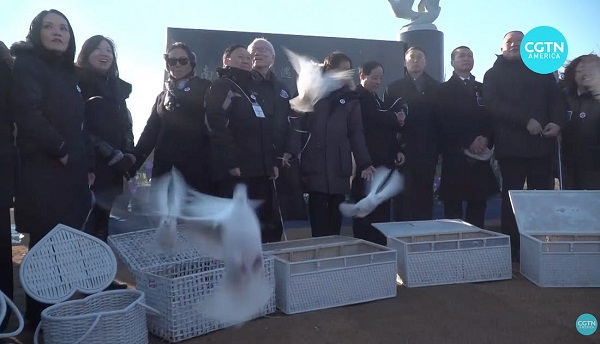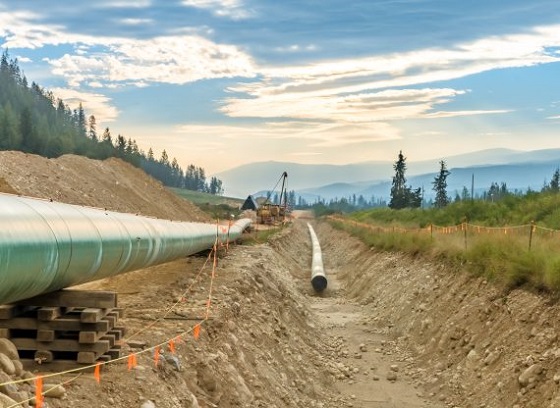Also Interesting
The Expected Effects of Ontario Legalizing Online Gambling

As the first Canadian province to legalize online casino gaming and sports betting, Ontario’s attitude to gambling is changing. What are the expected effects?
Legalized Online Gambling in Ontario
Placing bets at online casinos and sportsbook sites has never been more popular due to the global online gambling industry undergoing rapid development over the last 10 years. With the industry generating a record-breaking turnover in 2021, more new legal online gambling markets are opening up than ever before, especially in countries such as South Africa and Canada which have previously relied on offshore (rather than domestic) operators. In particular, the Canadian province of Ontario opened its first legal online gambling market in April 2022, which has had a huge effect on the gambling culture and infrastructure in the country, as well as having a positive influence on the wider economy. Let’s take a closer look
at the regulation of legalized online gambling in Ontario, including some of the knock-on effects that Canadian gamers are likely to see in the near future.
More Visible iGaming Regulators
Dedicated online gambling regulators such as iGaming Ontario work with the Canadian government (as a subsidiary of the Alcohol and Gaming Commission of Ontario (AGCO)) to provide domestic gamers with a safe and reliable iGaming culture, ensuring that casino and sportsbook operators in the area honor their legal obligations. iGaming Ontario provides a comprehensive list of approved iGaming sites and offers in-depth support and assistance to new operators hoping to set up in Ontario. If you’re a Canadian gamer or you’re thinking of setting up a business as an online casino operator, iGaming Ontario can provide you with all the help and information you may need to play or operate safely and legally. iGaming
Ontario is responsible for regulating operators and granting operating licenses. Highly visible and accessible regulators like iGaming Ontario can help to ease the transition into legalized gambling in the country, with gambling amongst Canadians likely to increase due to the new legislation.
More Tech-Focused Legislation
In recent years, the Canadian provinces have undergone some pretty monumental changes related to the passing of new legislation such as the French-modelled Bill 27: Working for Workers Act 2021. Essentially, this Act enables workers to ‘disconnect’ from work technology outside of business hours. In theory, Bill 27 should increase productivity in the workplace and provide staff with a much-needed break from technology when they’re not on the job. The passing of increasingly tech-savvy legislation like this Act is a sure indicator of Canada’s open-minded and liberal attitude towards technology, legislation, and wellbeing. It seems highly likely that the legalization of online gambling in Ontario will encourage the
passing of similarly groundbreaking legislation in provinces across the country.
More Sportbook Betting Options
Before the C-218 Bill was passed, Canadian gamblers were only legally allowed to use sports betting sites using parlays, which are essentially spread bets in which the gambler chooses multiple results, which must all be successful to warrant a win or cashout. While Canadian sports lovers could previously only make parlays or gamble on horse racing legally, the launch of Ontario’s first regulated sports betting market has changed everything. The previous federal ban on generic sports betting has now been lifted, with Ontario-based gamblers able to place a wider range of bets such as future bets and single-game betting.
Ontario is a densely populated Canadian province, with approximately 14.57 million people living and working in the area. Due to the new abundance of sportsbook betting sites available in the province, Ontario is expected to generate around $800 million in gross revenue from sports gambling in the next year. The obvious changes to sports betting legislation in Ontario have led to a much more diverse selection of operators to choose from.
Whether you’re looking for a safe and legal homegrown sportsbook or offshore betting site, it’s now easier than ever before to place bets on your favourite sports in the Canadian province of Ontario.
A Wider Selection of iGaming Sites
Players are now able to access an incredible selection of reputable, fully tested Canadian casino sites that have been given the green light by iGaming Ontario. The new national regulator has already granted legal market access to a wide range of top international online casino and sportsbook platforms such as PointsBet, Rivalry, theScore, 888 Casino, and Bet365. This means that players based in Ontario can now enjoy some of the most popular online casinos on the international market and benefit from the same perks and bonuses as many of their European and North American peers.
A Wider Selection of Online Casino Games
Of course, the rising number of new legal gambling sites in Canada has resulted in a marked improvement in the diversity and quality of casino games on offer. Whereas players in Ontario were previously limited to betting with parlays, gambling on horse racing, or playing staple casino games, they are now inundated with casino gaming options including roulette, blackjack, baccarat, video poker, craps, and online slot machines. Canadian players can also enjoy a wider selection of live casino and live dealer games in the country today, experiencing an authentic taste of a land-based casino from the comfort of your own home on mobile.
More Mobile Games Available
The increasing availability of high-speed internet and relatively cheap smartphones (second-hand smartphone models are much more affordable than new first-generation devices), has led to a revolution in online casino gaming worldwide. Whereas many gambling sites were previously only accessible via desktop browsers such as Goggle Chrome, the vast majority of iGaming platforms today provide mobile-optimized versions of their sites including a range of games specially designed to be enjoyed on a mobile phone screen. Due to the legalization of online gambling in Ontario, players in the province will now be able to choose from a more plentiful selection of mobile games that can be easily enjoyed when out and
about. This is great news for those Canadian gamers who enjoy gambling on the move, such as on their morning commute or during their afternoon break.
More Crypto-Accessible Platforms
Widely tipped as the payment system of the future, cryptocurrencies are powered by blockchain technology and can be basically described as virtual currencies that are quickly and easily transmitted across digital networks. Due to the rapid onset of blockchain and an international drive towards cashless economies, cryptocurrencies such as Bitcoin are now an extremely popular choice for countless online casinos and their members. Due to its relative safety and ease of use, cryptocurrency is now the favored method of making deposits and withdrawals for countless players across the world. In Canada, we have already seen multiple crypto-casinos popping up since the legislation was put into place, and the number of new crypto-enabled sites will only continue to grow.
Also Interesting
How Crypto Is Shaping the Future of Aussie Online Casinos in 2025-2026

Crypto Payments in Gaming: Aussie Trends 2025-2026
The Australian gaming scene has been levelling up big time in recent years, with crypto payments playing a massive role in this shift. Digital currencies are changing the game, and sites like https://fairgocasino-aus.com/ Fair Go casino Australia are jumping on board, giving punters new ways to handle their deposits and withdrawals. This article dives into how crypto’s making waves in Aussie gaming as we roll into 2026.
Why Crypto’s Taking Off in Australia
In the world of online gaming, nobody wants to be mucking about with slow transactions or dodgy payment systems. Speed and reliability are the name of the game, and cryptocurrencies are delivering just that. Platforms like Fair Go have embraced crypto, offering quicker transactions, lower fees, and a bit of anonymity compared to the old-school banking methods.
Whether it’s Bitcoin, Ethereum, or some of the newer altcoins, crypto’s becoming a go-to for gamers across Australia. Unlike the sluggish bank transfers that can leave you hanging for days, crypto deposits and withdrawals are done in a flash. For punters keen to get their winnings without the wait, this is a proper game-changer.
Why Aussie Gamers Are Keen on Crypto
There’s a fair bit to like about using crypto for online gaming:
- Speed: Transactions are sorted in minutes, not days, so you’re back spinning the reels or playing cards in no time.
- Low Costs: Crypto fees are usually a fraction of what you’d cop with credit cards or bank transfers.
- Privacy and Security: Crypto keeps your details under wraps, with transactions that are secure and tough to trace.
- Accessibility: With more crypto-friendly casinos popping up, it’s a breeze for Aussies to manage their accounts, whether they’re at home or out and about.
These perks are pushing Aussie players towards casinos that support crypto payments. Casino platforms such as Fair Go Australia are keeping up with the trend, making it dead easy for punters to handle their funds without the usual headaches. By adopting crypto, these best casino online sites are staying ahead of the curve and catering to a growing crowd.
Top Crypto-Friendly Casinos in Australia
With more casinos jumping on the crypto train, it can be a bit of a maze to pick the right one. Here’s a quick rundown of some of the top casino online Australia platforms that are crypto-friendly:
| Casino Name | Supported Cryptos | Benefits |
|---|---|---|
| Fair Go Casino | Bitcoin, Ethereum, Litecoin | Fast transactions, heaps of games, secure platform |
| Stake Casino | Bitcoin, Bitcoin Cash, Dogecoin | No fees, transparent setup, regular promos |
| 7Bit Casino | Bitcoin, Ethereum, Ripple | Top-notch customer service, quick payouts |
For anyone looking to give crypto gaming a burl, platforms like these are a solid starting point. They blend cryptocurrency payments with a cracking range of games to keep things interesting.
How Fair Go and Others Are Adapting to the Crypto Boom
It’s not just about accepting crypto—it’s about making it easy. Fair Go Casino has fine-tuned its platform to ensure crypto users have a smooth ride, with integrations for popular wallets and straightforward withdrawal processes. No one wants to be stuffed around with complicated steps when they’re trying to cash out their winnings.
As the crypto market keeps evolving, more casinos are likely to follow suit, adding support for new coins and expanding payment options. Down the track, we might see emerging cryptocurrencies like Solana or Polkadot popping up, giving punters even more flexibility to play Australian pokies online or other games.
What’s Next for Crypto in Aussie Online Gaming?
The future’s looking pretty flash for crypto payments in Australia’s gaming industry. Word is, as cryptocurrencies become more mainstream, they’ll nab an even bigger slice of the online casino pie. This could mean faster, cheaper, and more secure gaming for everyone. Blockchain tech’s also set to play a bigger role, shaking things up even further.
Gambling sites like FairGo are already leading the pack, blending crypto with traditional payment options to keep things versatile. By doing so, they’re staying competitive in a world that’s going more digital by the day.
As we head into 2026, expect more casinos to make crypto their main gig, creating a gaming scene that’s quicker, safer, and more convenient for players across Australia. Whether it’s spinning the Australian pokies online or diving into other casino games, the crypto revolution’s here to stay.
Also Interesting
Why Good Sunglasses Are a Smart Investment for Women

Quality sunglasses elegantly complete an outfit. But beyond that, they also protect your eyes, keep you comfortable outdoors, and offer long-term value that cheap alternatives simply cannot match. For many women, choosing well-made eyewear is not just about style; it is a practical decision that supports everyday comfort and overall well-being.
Good sunglasses are a small item, but they make a big difference. Whether you spend time driving, walking, traveling, or working outdoors, the right pair protects you from the sun’s harsh elements while complementing your personal style. Understanding the benefits helps you make a confident choice that offers both immediate comfort and long-term advantages.
Why Eye Protection Should Come First
Strong sunlight can affect your eyes more than you realize. Long hours outdoors expose you to UV rays that may contribute to discomfort or more serious concerns over time. High-quality sunglasses give your eyes the shielding they need, helping you enjoy brighter days without strain.
A well-designed pair blocks a high percentage of UVA and UVB rays, giving your eyes a consistent layer of protection throughout the year. This is especially useful for women who spend extended time outside, whether for work, fitness, travel, or daily errands. Quality lenses also help reduce glare from reflective surfaces such as water, windshields, concrete, and snow. This makes tasks like driving or outdoor sports safer and far more comfortable.
Women are also more likely to experience certain age-related eye changes, so long-term protection matters. Consistently wearing sunglasses with reliable UV filtering can support healthy vision and reduce the daily stress sunlight places on your eyes.
What Makes Quality Sunglasses Last Longer
Cheap sunglasses may be tempting, but they rarely last. Frames break easily, lenses scratch quickly, and the protective coating often fades after a short period of use. Investing in durable eyewear saves money and avoids the cycle of constant replacements.
High-quality sunglasses are built with stronger materials that withstand bending, drops, and everyday handling. Premium lenses maintain clarity even after months of wear, and good hinges keep everything aligned and secure. Many well-made pairs also come with better case protection, making it easier to keep them in top condition.
Durability is not only about physical strength; it is also about consistent performance. Reliable sunglasses maintain their level of UV protection, lens clarity, and fit over time, giving you dependable comfort whenever you put them on.
Investing in high-quality women’s sunglasses also means choosing lenses and frames that can manage daily wear, shifting weather conditions, and changing fashion preferences without losing their appeal.
How Premium Sunglasses Enhance Personal Style
Sunglasses are one of the most expressive accessories a woman can own. They add character to your look, elevate simple outfits, and help you create a signature style without effort. Investing in a quality pair means you’re choosing a piece that enhances your wardrobe instead of something that fades quickly or feels outdated after a season.
Well-designed sunglasses come in shapes, colors, and sizes that flatter different face types. Whether you prefer something bold and modern or understated and classic, good brands offer options that complement your features without overwhelming your natural look. Because they are made with better materials, they tend to keep their shape and finish, which helps them stay stylish for longer.
A refined pair of sunglasses can pull together work outfits, casual weekend clothes, or travel looks. It is one accessory that follows you through many situations, making it worth choosing a design you enjoy wearing regularly.
Why Comfort Matters More Than You Think
Comfort often separates high-quality sunglasses from cheaper substitutes. When eyewear is well-fitted, you barely notice it on your face. Poorly made frames, on the other hand, cause pressure on the nose bridge, slide down during warm weather, or pinch behind the ears.
Quality sunglasses use lightweight materials that sit comfortably on the face without creating tension. The weight is balanced, the arms align properly, and the nose pads fit securely without leaving marks. This is especially important for women who wear their sunglasses for long periods while traveling, driving, or spending time outdoors.
Better lenses also help reduce eye fatigue. Clearer optics mean you do not have to squint or adjust your focus repeatedly. This makes daily tasks easier and reduces the strain that often appears after hours in bright light.
Choosing Brands That Prioritize Quality and Sustainability
Well-established eyewear brands have years of craftsmanship behind them. This experience translates into consistent quality, thoughtful design, and dependable protection. Choosing sunglasses from a reputable company means you are investing in something tested, refined, and built to last.
Many brands are also moving toward more sustainable practices. They use responsibly sourced materials, reduce waste, and create packaging that has a lower environmental impact. For women who value eco-friendly decisions, selecting sunglasses from companies with transparent and ethical manufacturing practices offers added peace of mind.
Good brands also provide better customer support. If you need adjustments, repairs, or replacement parts, reliable companies typically have better options available than budget alternatives.
The Wider Health Benefits of Wearing Sunglasses
Sunglasses support more than your vision. They also help protect the delicate skin around your eyes, where signs of aging often appear first. Prolonged exposure to sunlight can accelerate fine lines and make the skin feel more sensitive. A good pair of sunglasses reduces this exposure, keeping the area more comfortable and better shielded.
Bright light can also trigger headaches or migraines in some women. Quality lenses reduce harsh glare and soften the visual intensity of sunny days, helping you feel more at ease outdoors.
If you’re active outdoors, sunglasses become part of your overall health routine. They keep your eyes from drying out in windy environments, reduce irritation from dust or sand, and make movement more comfortable during long walks, hikes, or bike rides.
Conclusion
Investing in high-quality sunglasses is more than a style decision; it is a smart choice that protects your eyes, boosts comfort, and adds long-lasting value to your everyday life. Quality women’s sunglasses give you reliable UV shielding, better vision clarity, and a level of durability that cheap alternatives rarely match. They also enhance your personal style and offer a level of comfort that makes long days outdoors far more enjoyable.
When you choose a pair that combines good craftsmanship, thoughtful design, and dependable protection, you are investing in something that supports your well-being every day. A single, well-made pair becomes an essential part of your wardrobe, your safety, and your confidence in the sun.
-

 armed forces3 hours ago
armed forces3 hours agoOttawa’s Newly Released Defence Plan Crosses a Dangerous Line
-

 Bruce Dowbiggin2 days ago
Bruce Dowbiggin2 days agoHunting Poilievre Covers For Upcoming Demographic Collapse After Boomers
-

 espionage2 hours ago
espionage2 hours agoCarney Floor Crossing Raises Counterintelligence Questions aimed at China, Former Senior Mountie Argues
-

 Business2 days ago
Business2 days agoState of the Canadian Economy: Number of publicly listed companies in Canada down 32.7% since 2010
-

 Censorship Industrial Complex2 days ago
Censorship Industrial Complex2 days agoCanadian university censors free speech advocate who spoke out against Indigenous ‘mass grave’ hoax
-

 Alberta2 days ago
Alberta2 days agoHousing in Calgary and Edmonton remains expensive but more affordable than other cities
-

 Health1 hour ago
Health1 hour agoAll 12 Vaccinated vs. Unvaccinated Studies Found the Same Thing: Unvaccinated Children Are Far Healthier
-

 Energy4 hours ago
Energy4 hours ago75 per cent of Canadians support the construction of new pipelines to the East Coast and British Columbia





